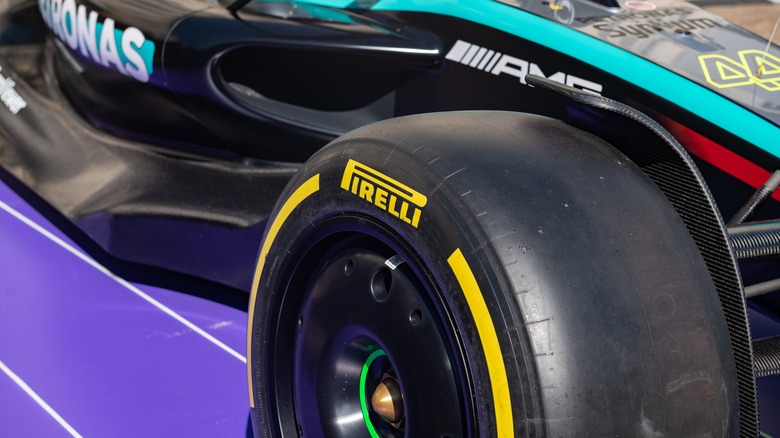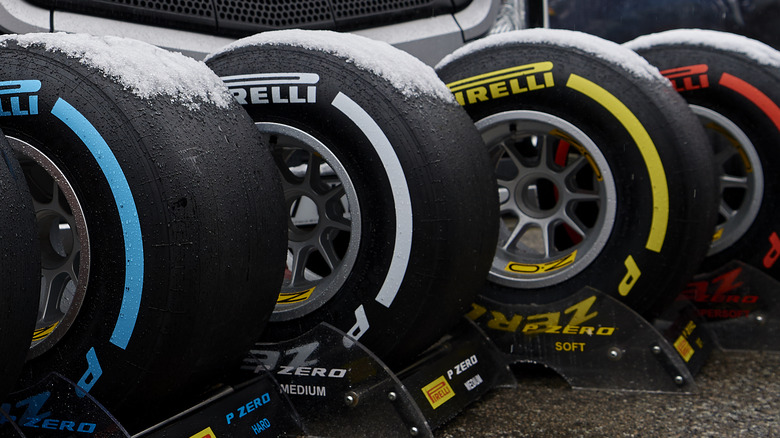The Surprising Life Cycle
Formula 1 (F1) racing is known for its high-speed thrills, cutting-edge technology, and intense competition. However, behind the scenes, there are intricate systems in place to manage every aspect of the sport, from the cars to the tires. F1 tires are a critical component of performance, and their life cycle is much more complex than simply discarding them after a race. In this article, we’ll explore the surprising journey of used F1 tires and the innovative recycling methods that ensure they don’t just end up in a landfill.
The Role of Tires in F1 Racing: An Unsung Hero
F1 tires are designed to withstand extreme conditions, including intense heat, pressure, and friction. A typical race tire can endure speeds of over 200 mph while maintaining optimal grip. Each tire is carefully crafted with a specific rubber compound that ensures maximum performance under different track conditions. But what happens when these high-performance tires are no longer usable on the track? Do they just get tossed aside?
Not quite.  rikstock/Shutterstock
rikstock/Shutterstock
Why F1 Tires Can’t Be Sold: The Secretive Recycling Process
Used F1 tires are not simply discarded after a race; they are meticulously tracked and handled through a secretive recycling process. F1 teams do not own their tires; they lease them from tire suppliers like Pirelli, the official tire supplier for Formula 1 since 2011. This leasing system ensures that the tires are returned after use, preventing them from being sold or reused by the teams.
The tires are then taken to designated recycling centers where they undergo a process known as pyrolysis, which helps recover valuable materials like carbon black and oil. These materials are then used in the manufacturing of new F1 tires or other industrial applications.
The Pyrolysis Process: Turning Waste Into Valuable Resources
Pyrolysis is a high-temperature process that involves the controlled burning of used F1 tires. When these tires are burned at high temperatures, they break down into several valuable by-products, including carbon black and oil. Carbon black is a critical material used in the production of new tires, while the oil recovered during pyrolysis can be repurposed in manufacturing or energy production.
Why Is Pyrolysis Important for the Environment?
The pyrolysis process plays a crucial role in reducing the environmental impact of F1 racing. Instead of allowing tires to sit in landfills or incinerators producing harmful emissions, pyrolysis converts used tires into useful materials that can be reused, reducing waste and minimizing the carbon footprint of the sport.
The Confidentiality of F1 Tires: A Competitive Edge
In the world of Formula 1, innovation and secrecy are essential. Tire manufacturers like Pirelli use proprietary materials and technologies to create tires that provide a competitive edge. To protect their intellectual property, Pirelli ensures that all used tires are collected and recycled in-house, preventing rival teams or manufacturers from analyzing the materials used in the tires.
According to Mario Isola, Pirelli’s head of F1 racing, “From day one, we collected all the tires, for confidentiality of course, but also to have the possibility to recycle them in a sustainable way.”
This level of secrecy ensures that no one else can get their hands on crucial data about the tire composition and performance, keeping Pirelli’s competitive advantage intact.
How F1 Tires Are Recycled: From Waste to Energy
Once the tires are collected, they are shredded into smaller pieces and repurposed in various ways. One of the most common methods of recycling used F1 tires is converting them into fuel for industrial purposes. These shredded tire materials are used as fuel in cement kilns and brick ovens, where they generate more heat than traditional fuels like coal.
Sustainable Fuel and Energy Recovery
The heat produced from burning shredded tires is comparable to the energy produced by petroleum-derived oils or coal, but it results in fewer harmful emissions. The by-products, such as carbon black, can be collected and reused in manufacturing new tires, creating a closed-loop system that benefits both the environment and the tire industry.
Turning Used F1 Tires Into Playgrounds and Asphalt
But the recycling doesn’t stop with fuel. The rubber from used tires is also repurposed into products we use every day. Shredded tires can be turned into playground turf, rubber mats, and even used in the creation of asphalt for roads. This innovative approach reduces waste while providing a sustainable alternative to traditional materials.
The Future of F1 Tire Recycling: Green and Innovative Solutions
Pirelli has been working on several innovative projects to make the tire recycling process even more sustainable. According to Isola, “We are working on projects that are super confidential, but very, very nice.” These initiatives are aimed at reducing the environmental impact of tire production and creating even greener solutions for recycling used tires.
New Technologies on the Horizon
As the demand for sustainable practices continues to grow, tire manufacturers are exploring new technologies to further improve tire recycling. Pirelli is already using FSC-certified rubber, which includes at least 15% sustainably sourced natural rubber. Additionally, they are focused on reducing their reliance on synthetic materials and finding more eco-friendly alternatives in their tire production.
Why F1 Tire Recycling Matters to Digital Marketers
As digital marketers, understanding the importance of sustainability in industries like Formula 1 can be valuable for creating content that resonates with environmentally conscious consumers. Highlighting the eco-friendly initiatives in F1 tire recycling can be a compelling angle for content aimed at readers who care about the environment and corporate responsibility.
Leverage Sustainability Trends in Your Marketing Strategy
Incorporating sustainability into your marketing strategy can enhance your brand’s reputation and help attract a broader audience. Whether you are working with automotive brands, sports industries, or eco-conscious startups, showcasing the innovation in recycling F1 tires could make your content stand out in an increasingly competitive digital landscape.
Conclusion: F1 Tires Lead the Way in Sustainability
From their high-performance origins to their surprising second life as fuel, playground turf, and even new tires, the journey of used F1 tires highlights the importance of sustainability in the racing industry. Tire manufacturers like Pirelli are leading the charge in tire recycling, ensuring that used tires are repurposed for a variety of industrial applications while minimizing their environmental impact.
For digital marketers, there’s a great opportunity to leverage the fascinating world of F1 tire recycling in your content. By focusing on the innovation behind tire recycling, you can engage audiences with compelling, sustainable narratives that resonate with today’s eco-conscious consumer.
Ready to dive into the world of sustainable practices and F1 innovation? Start incorporating green initiatives into your content strategy and watch your audience grow as you create engaging, impactful stories that showcase the future of recycling and sustainability.
Read our previous article: Lenovo ThinkStation P3 Tiny Review

